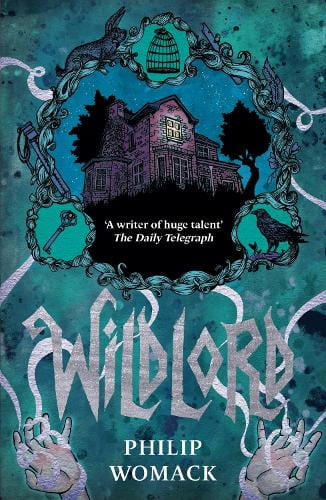The Blue Book of Nebo by Manon Steffan Ros and The Blackthorn Branch by Elen Caldecott
Books of the Week: 26 February 2003
It has been a long time since I’ve picked a book of the week, so I decided to read two books from the recently-announced longlist for the Yoto Carnegies. To remind me of my homeland, I chose two stories set in Wales, both of which highlight the importance of stories and reading and the power of the natural world.
The Blackthorn Branch is a middle-grade fantasy and The Blue Book of Nebo is a post-apocalyptic novel aimed at older readers.
The Blue Book of Nebo
Fourteen-year-old Dylan, his baby sister Mona and his mum Rowenna live near the village of Nebo in ‘the middle of nowhere’. From their house they can see the towers of Caernarfon Castle, the sea and the island of Anglesey. One day, when Dylan is six, Rowenna hears a radio announcement at work saying that bombs have been dropped on big American cities. She drives to the nearest large town, where she loads up a hired transit van with supplies and returns home. A couple of days later, the power goes off and the frightening chain of events that Dylan and Rowenna call ‘The End’ changes the world forever. The two decide they will write their experiences in a blue notebook that they scavenge from the local village. Rowenna will write about ‘olden days’ and Dylan about what their lives look like now. They promise not to read one another’s entries.
This ‘blue book’ makes for a brief, powerful and bleak read, but never a hopeless one. Despite the harsh conditions, Dylan and Rowenna find much more of a connection with the natural world. Dylan discovers a gift for growing food and a sensitivity to nature. Rowenna sees human emotions in the environment where a ‘potato field is kind on a warm spring day’ or the house develops a hole in the roof because it is ‘fed up’. They gain strength from books and reading, especially from exploring Welsh literature. Dylan notices that the books he used to read, that took cars and computers and phones for granted, don’t make as much sense as they used to and he turns to reading much older stories, including those in the Bible. This is a thoughtful and reflective read with themes that resonate long after the book has been put down.
A couple of good companion reads to The Blue Book of Nebo would be Z for Zachariah or Island of the Blue Dolphins.
The Blackthorn Branch
In the small village of Penyfro in North Wales, Cassie and her cousin Siân are trying to cast a spell using ‘a mush of leaves and rabbit poo and bottle tops’ stirred in a plastic bucket. Siân is confident it will work, but Cassie isn’t convinced that any spell will be able to transform her grumpy, teenage brother Byron back into someone who was fun to be with, rather than a giant sulker who doesn’t seem to care about her, or their Mam and Dad, any more.
One Saturday, when Byron has stormed off in yet another huff, the two girls follow him up the hill outside the village to the old railway line; a quiet, overgrown place since the decline of local industry. They spy on Byron from behind some bushes as he and three other teenage boys dance around a fire in front of a rusting car wreck. Cassie and Siân don’t recognise the boys and, when a flash of blue light erupts from the tunnel, they are so unnerved that they run back home.
The following morning they learn that Byron didn’t come home that night. When he fails to turn up as the day wears on everyone becomes anxious and afraid and a search is mounted. Cassie and Siân feel that the searchers are looking in the wrong locations. They know there is only one place they must venture in order to find him: the dark and dripping tunnel with its weird blue light where he disappeared.
This fast-moving read is an engaging mix of the magical and the everyday. The fantasy is rooted in Welsh myths and legends involving the type of fairy folk (tylwyth teg) who are given to deception, trickery and malice. In contrast, Cassie and Siân, their parents, their Nain (Welsh for ‘grandmother’) and the community of Penyfro are portrayed with warmth and understanding. Woven throughout are lyrical descriptions of the natural world and some messages about the value of stories and reading and the importance of nature. It all adds up to a charming and satisfying read.
The Blackthorn Branch is suitable for readers in Year groups 3-7, but can be enjoyed by anyone. If you are older than this, and like stories based on mythology and faerie, try the much more frightening ‘The Call’ by Peadar O’Guilin or ‘The Cruel Prince’ by Holly Black.



